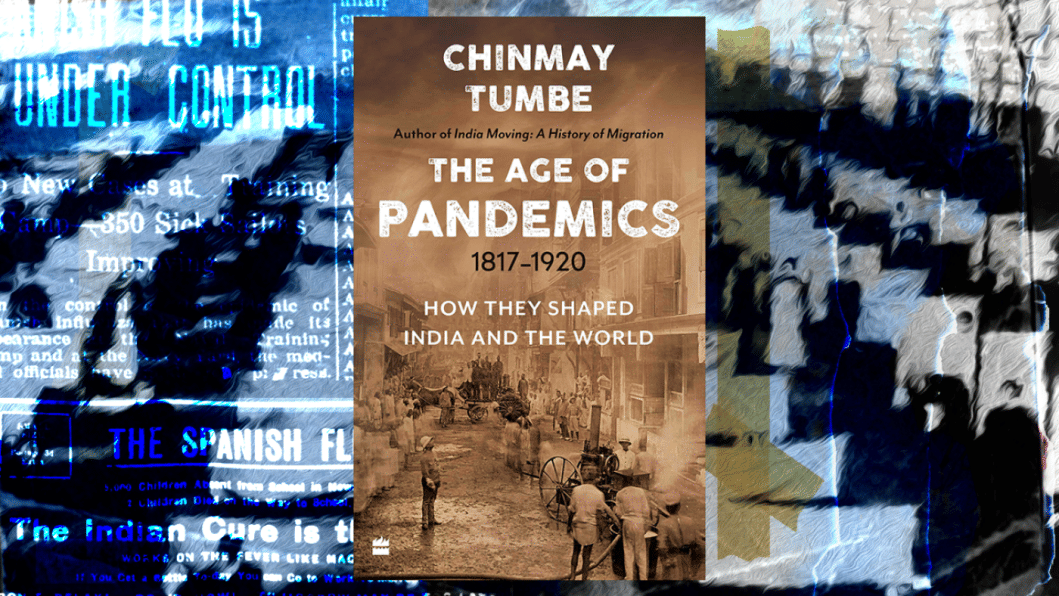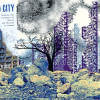Chinmay Tumbe's 'The Age of Pandemics': Lessons from history in desperate times

Chinmay Tumbe's The Age of Pandemics (1817-1920): How They Shaped India and the World (HarperCollins, 2020) is a timely read, touching upon three historic pandemics and the effects they had on the culture, economy, and politics of the Indian subcontinent.
Tumbe's light and humorous tone makes reading history easier and allows one to read between the lines. He starts by categorising epidemics and pandemics, and connects seemingly unrelated threads while retaining a clear picture. For example, he connects the mysterious circulation of chapati bread to the cholera epidemic and the coup in the army barracks of Barrackpur in 1857. And he reflects on the devastation caused by the influenza pandemic in 1918, when a shortfall of rain caused poor harvest and eventually resulted in a famine.
In the process of documenting this history, the author, a faculty member of IIM Ahmedabad who writes about migration, cities, and history, focuses more on the economic and political implications of the events, rather than just the timeline and the numbers associated with them. He unpacks the power of negotiation gained by the labour force in the post-pandemic times or the effects of per capita income on the death rate, all while avoiding academic jargon. While the analyses in the chapters covering cholera and the plague can seem surface-level, Tumbe digs deeper in the section covering the influenza pandemic, an episode that has all but disappeared from the collective consciousness of the present-day Indian subcontinent.
One might also feel let down by the extent to which Tumbe unpacks the ongoing COVID-19 pandemic. I had expected that he would dwell more on the migration associated with the pandemic and the plight of the migrant workers in India. But the author compensates for this with his survey of the larger patterns which have emerged from centuries of mortal crisis.
While the British administration blamed the cholera pandemic mostly on Hindu and Muslim pilgrims, a narrative that most complemented their project of colonial oppression, in the United States, it was declared as India Cholera. This narrative is similar to how the world has reacted to COVID-19, some dubbing it the "Chinese virus", while right-wing Hindu nationalists blamed it entirely on Muslims attending a Tablighi Jamaat session—seemingly individual incidents that cater to and perpetuate casual and severe racism and communalism.
Such nationalisation of disease has profound cultural implications. Tumbe draws the example of a Catholic propaganda film, The Catechist of Kil-Arni (1923), set against the backdrop of cholera-ridden Pondicherry in India, where the locals' way of life intensifies the horror of the disease and the missionaries come to the rescue with their "superior" solutions. "[But] in the treatment of cholera during the Age of Pandemics", Tumbe clarifies, "the gap between European medical treatments of cholera and the Indian ones was negligible in the early nineteenth century [...] But this was sufficient to drive a religious agenda to win adherents and wean them away from their 'superstitions.'"
The trend continues with the ascent of the third plague. France was able to rally the international community and exert pressure over England using the narrative of the "Indian Plague". The British, on the other hand, were opposed to quarantine measures due to the possible losses that they would incur in trade. The consequent death rates were highest in the marginal socioeconomic backgrounds. Women were even more vulnerable, as they faced harassment by administrators while serving as the sole caregivers in plague-ridden families. Centuries later, this trend still endures.
The struggles were worsened by the prejudices of caste and race. While in India, blame befell the lower caste families as an excuse for witch-hunts and murders, South Africa was making way for apartheid. "The white-skinned ruling class, who anyway favoured strong segregationist policies, used the plague to further their cause and Ndabeni, a separate township for black-skinned residents, was created in Cape Town", Tumbe elaborates.
Delving into these histories drove me into a deep state of despair. With each section, it became clearer to me how easily and quickly we have forgotten history and the lessons that it offers, and continue to suffer repeatedly, as individuals and nations. But it also gave me hope, for I observed that we humans have come together in times of crises and showed empathy and resilience over and over again, and survived.
Nahaly Nafisa Khan is sub editor of Toggle, The Daily Star. Chinmay Tumbe's The Age of Pandemics is available at Omni Books, Dhanmondi, Dhaka.

 For all latest news, follow The Daily Star's Google News channel.
For all latest news, follow The Daily Star's Google News channel. 








Comments